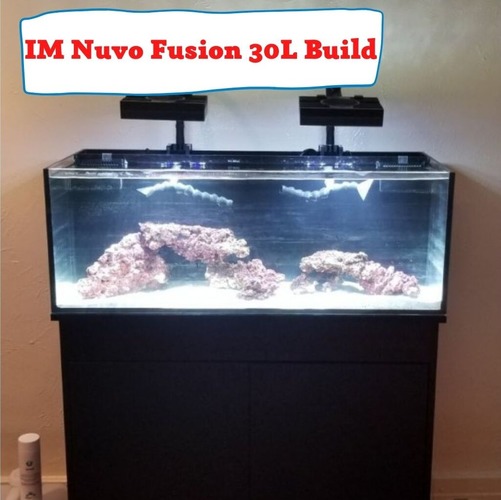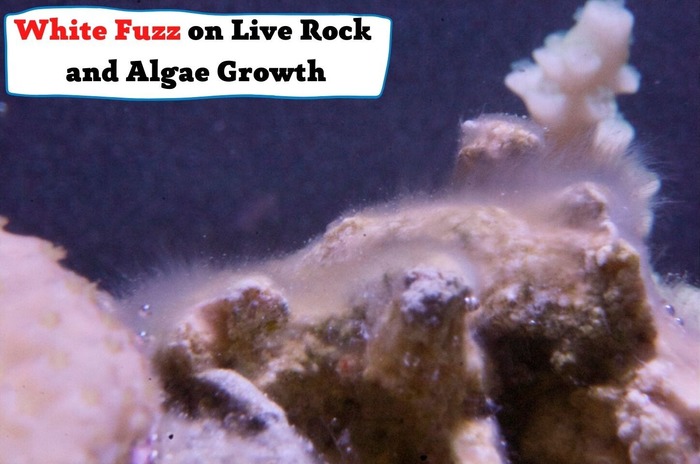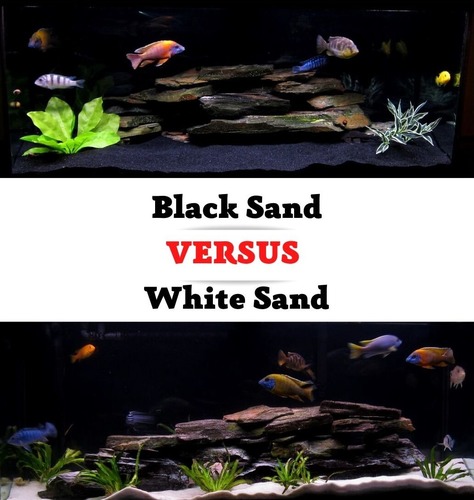There are no questions about the importance of using rocks in the aquarium. But choosing the right rock can be a problem sometimes, especially when you are unfamiliar with the type of rock you choose.
This could not be further from the truth when considering Texas Holey rock. Although many hobbyists have used Texas Holey rocks for their freshwater aquariums, many reef aquarium owners often ask why they should have a reef with Texas Holey rocks.
This article discusses Texas Holey rocks and a few reasons you should get them for your reef aquarium. Read on to learn more!

What Is Texas Holey Rock
Texas Holey rocks are quite popular among freshwater aquarists, especially owners of African cichlids and many other hard-water-loving species.
Many others use them for outdoor ponds and aquascaping for many reasons ranging from their pH levels buffering properties and the numerous crevices and holes in them. These holes are great hiding places for smaller fishes in the community aquarium and for limiting the chances of a confrontation between aggressive species.
It is also known as Honeycomb limestone. Texas Holey rocks are usually used to balance the pH levels in freshwater aquariums and to increase the water hardness.
The holes in the rocks do more than reduce the chances of confrontation between fishes. It also provides the fish with a place to sleep and hide whenever necessary.
Texas holey rocks are of two major types. The naturally occurring Texas holey rocks and the artificial Texas holey rocks.
Natural Texas Holey Rocks
The natural Texas holey rocks are a type of limestone with holes and crevices that are extracted from Texas.
Features and Specifications
- They are limestone that is extracted from Texas.
- They have holes and crevices in which fishes can swim or hide.
- They are natural and do not have an expiry date.
- They are used to increase water hardness and keep the pH balanced.
- Each Texas holey rock is unique and has no replica.
- They are sold in pet stores.
- They are insoluble in water, but an infinitesimal fraction of them might dissolve in saltwater.
Pros
- They are used to beautify aquariums and give fishes exciting moments of running through holes and hiding in crevices.
- With Texas holey rock in your aquarium, the pH of your water will be balanced.
- Termites or bugs are not attracted to them.
- It is nice for aquariums, aquascaping, and ponds, as only a few of them will fill up your tank. So, you spend less.
- It is great for both freshwater and saltwater.
- They can be used as ornaments.
- They are displayed in rock gardens.
- The crevices can be filled with soil for planting crops like small sedums.
- They provide shelter to fish.
Cons
- It is found in one location in the world – Texas. So, to get access to it, you need to either travel to Texas or purchase it from a pet store.
- The medium size weighs about 60lbs. This makes it not too nice for small aquariums.
Artificial Texas Holey Rocks
The artificial Texas holey rocks are manufactured of synthetic materials, which are made to look like the natural Texas holey rocks. It serves the same fish purpose as the natural one.
Features And Specifications
- They are made from resins.
- They are made to look exactly like the natural Texas holey rocks – containing holes and crevices.
- They come in different colors such as blue, off-white, etcetera.
- They come in different shapes and sizes
- They have adjustable dimensions.
- They come with an expiry date.
Pros
- They are used to beautify aquariums and give fishes exciting moments of running through holes and hiding in crevices.
- It is great for both freshwater and saltwater.
- They are less expensive compared to the natural Texas Holey rocks.
- They add colors to the floor of aquariums while giving it the feeling of depth.
- It is less dense compared to the national ones.
Cons
- They do not help to balance the pH level of the aquarium.
- They are trashed after about 2 to 3 years of use.
Why Should You Get Texas Holey Rock Reef?
Many factors and considerations go into building the perfect rock reef for your marine aquarium. These include the choice of plants: whether live or aquatic, the preferred live plants to use (if you choose to use live plants), the appropriate lighting system, the choice of decorations, and the type of rock to use.
There is a long list of rocks to use for your reef aquarium. Some are synthetic, especially for reef aquarium owners that do not want their rock leaching nutrients that will increase the hardness of the water.
Others are live rocks to boost the growth of biological filters and other micro marine life in the tank, provide hiding places for the fish, and increase the water hardness, especially for fish species that thrive in hard water.
One of the rocks to consider for your reef aquarium is the Texas Holey rock. There are many reasons for preferring a Texas Holey rock reef to any other type of rock reef. But here are a few reasons below, especially for the newbies exploring the saltwater aquarium aspect of the fishkeeping hobby.
Lower Cost Alternative to Base Rock
Texas Holey rock is a great alternative to expensive base rocks for your reef aquarium. It is a solution for you if you are bothered about the costs of buying some base rocks for your reef aquarium.
One great way to go about it is to fix your Texas Holey rock as the base rock in the aquarium while you put your live rock on top of the fixed base rock.
With Texas Holey rock as your base rock, you can build a very attractive display tank at an incredibly lower price than it would normally cost.
However, you want to be sure to do the regular water checks and cycle after introducing the Texas Holey rock into your aquarium. This is because Texas Holey rock is made of Limestone.
As a calcium carbonate rock, it is only natural that it will increase the water hardness even though it can be used as a buffer for your pH levels.
You want to check regularly to maintain the right water parameters.
Maintaining the Right Water Chemistry for Your Reef Aquarium
Sea water is normally very hard. It is usually in the range of about 6,330ppm. This is in contrast to the 15 – 375 hardness range of freshwater water.
So, for the right water chemistry and a complete imitation of the natural reef, a Texas Holey rock is one of the basic things you need for an ideal Texas Holey rock reef.
Remember that Texas Holey rock is made of limestone and, as such, will leak calcium into the reef aquarium water. So, using Texas Holey rock for your reef aquarium is a great way to keep the water hardness level up without resorting to chemicals.
Improving the Quality of Your Marine Life
The beauty of owning a reef aquarium is in its display. Texas Holey rock gives aesthetic value to your reef aquarium, helping you to achieve the best reef aquarium you can put up for display.
But it does more than add aesthetic value to your aquarium. Texas Holey rock also improves the quality of life for your pets.
The crevices and holes in the rock provide room for hiding, sleeping, and protection for your fish, just like their natural habitats in the reef. This is especially great if you are keeping fish species like Firefish, Clownfish, Damselfish, and any other similar species.
Without rocks that have holes and hiding places like the Texas Holey rock, your fish will become stressed because they are not in their natural environment.
Sensitive fish species are likely to get ill from stress. But you can improve your pet’s health by adding Texas Holey rocks to alleviate the stress and improve the quality of your pet’s life as they exhibit their natural behaviors.
Final Thoughts
There are a lot of benefits to derive from Texas Holey rock. Although they are mostly used for freshwater aquariums, they can also be used in reef aquariums.
But it would be wise to also add some porous live rocks in your reef aquariums for biological filters.
You want to remember that Texas Holey rocks are usually very dense. Since it is a closely compacted rock, it does not support the growth of microbes. It is so compacted that microbes and hitchers will find it impossible to penetrate.
This is where it essentially differs from ocean live rocks, which are more like a household of bacterial colonies beneficial for your reef tank. Although this may seem like a downside, the dense nature of this rock is why it is great for a display reef tank, as marine life will be more visible.
But it would be best to keep a small live rock with beneficial bacterial colonies for a healthy tank.
- Snail Mantle Collapse – Here’s What Every Pet Owner Should Know - April 2, 2023
- Algaefix Killed My Fish – What Have I Done Wrong? - March 2, 2023
- How Long Can Live Rock Be Out of Water? And What Will Happen Then? - February 2, 2023




